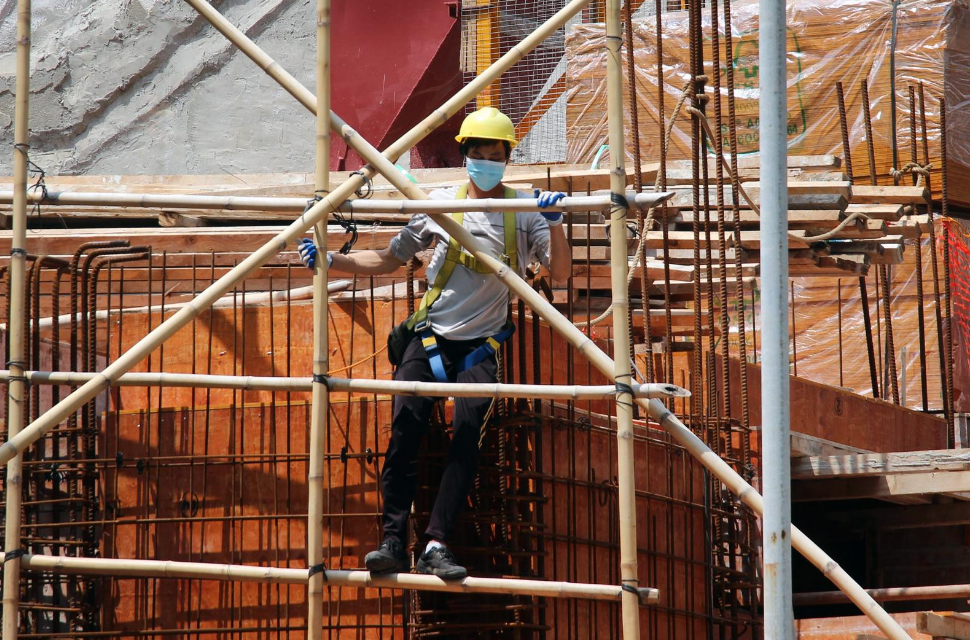States Controlling Coronavirus Spread See Uptick in Construction and Manufacturing Job Growth
Employment in construction, manufacturing, and mining and logging increased by 39,000 jobs in July, or 0.2 percent over the previous month, according to the latest numbers from the Bureau of Labor Statistics. Fun fact, employment in these sectors is at the same level as when Trump took office in 2017. However, employment has decreased by 2,087,000 jobs since before the Great Recession. Like previous updates, some states have benefited from somewhat steady job growth while others are floundering from a lack of guidance regarding coronavirus at the federal, state and local levels.
Construction jobs increased by 20,000, or 0.28 percent over the previous month. After rebounds in May and June from the plunge in jobs that occurred in April, July’s numbers show little growth. It’s always worth noting, though, that the numbers are likely to be adjusted when the August jobs update is released later this week.
Looking at the numbers by region, it’s clear growth is concentrated in some parts of the US. The Northeast led the gains with an increase of 18,200 jobs, or 1.80 percent over the previous month. The Midwest saw a small increase of 5,900 jobs, 0.44 percent over the previous month. The West experienced a 19,600 decrease in jobs, -1.04 percent from the previous month, and jobs in the South decreased by 9,200, a -0.3 percent decrease from the previous month.
New York experienced the largest increase in construction jobs, with an increase of 13,600 jobs, 3.99 percent over the previous month. Once the center of the pandemic in the US, all regions of New York state had reached Phase 4 of reopening by late July; though New York City has faced additional restrictions, according to the New York Times. Construction jobs in the state, however, remain 56,500 jobs below the pre-pandemic level. July is good news for the state, but there is still a ways to go.
After New York, Missouri, Maryland, and Michigan followed with 4,400 (+3.46 percent), 2,600 (+1.55 percent), and 2,600 (+1.54 percent) jobs, respectively. Missouri is now 800 jobs above its pre-pandemic level.
The three states with the largest decreases in construction jobs will sound familiar to anyone who has been following the spread of the coronavirus. California experienced a 14,800 net decrease in jobs in July (-1.75 percent over the previous month), followed by Florida and Texas both with -6,300 jobs (-1.11 percent and -0.85 percent, respectively). After surges in cases in June and July, California and Texas took steps to scale back reopenings. Florida Governor Ron DeSantis just continues to do his own thing.
Manufacturing jobs increased by 26,000 in July, 0.22 percent over the previous month. Much like construction, the month-to-month growth wasn’t very big. And much like construction, growth appears to be only concentrated in some parts of the US. The Midwest led gains with a 14,900 net increase in jobs, 0.39 percent over the previous month. The West was next with 4,600 jobs (0.20 percent) and the Northeast with 600 jobs (0.03 percent). Finally, the South lost 3,100 jobs, -0.08 percent over the previous month.
Michigan experienced the largest increase in manufacturing jobs with a net increase of 9,400, or 1.71 percent over the previous month. Manufacturing jobs in Missouri also jumped 3.13 percent from the previous month to add 8,200 jobs. While manufacturing jobs in Michigan remain 64,000 jobs below pre-pandemic levels, Missouri is only 6,800 jobs below its pre-pandemic level.
Virginia experienced the largest net decrease in manufacturing jobs, with a 6,700 drop, or -2.85 percent over the previous month. After Virginia, North Carolina, Illinois, and Texas followed with decreases of 5,600 (-1.27 percent from the previous month), 4,600 (-0.82 percent), and 4,600 jobs (-0.53 percent), respectively. The largest percentage drop from the previous month was in Maine, which experienced a net decrease of 3,500 jobs, a -7.23 percentage point drop.
Mining and logging jobs decreased by 7,000, or -1.11 percent over the previous month. The three-month average from May to July was -10,670 jobs, and employment in the sectors has decreased by 115,000 jobs over the last 12 months, a -1.65 percent change from the previous 12 months.
In West Virginia, mining and logging has reached its lowest point ever since the BLS started tracking statewide, seasonally adjusted employment in the sector in 1990. The state lost 1,200 jobs, a 5.94 percent drop over the previous month, leading to a total of 19,000 jobs in West Virginia. Texas also lost 1,200 jobs, a 0.63 percent drop from the previous month, and Pennsylvania lost 600 jobs, a 2.52 percent drop.
Similar to past updates, this report highlights the havoc coronavirus is playing on the economy as a lack of federal guidance has resulted in a patchwork of inconsistent policies across the states. The August jobs numbers will be released on Friday, so it’ll be interesting to see how July numbers were revised at the national level as well as how the sectors fared as states continue to struggle with the pandemic.
California Construction Coronavirus Florida Illinois Logging Maine Manufacturing Maryland Michigan Midwest Mining Missouri New York Northeast Pennsylvania Texas Virginia

